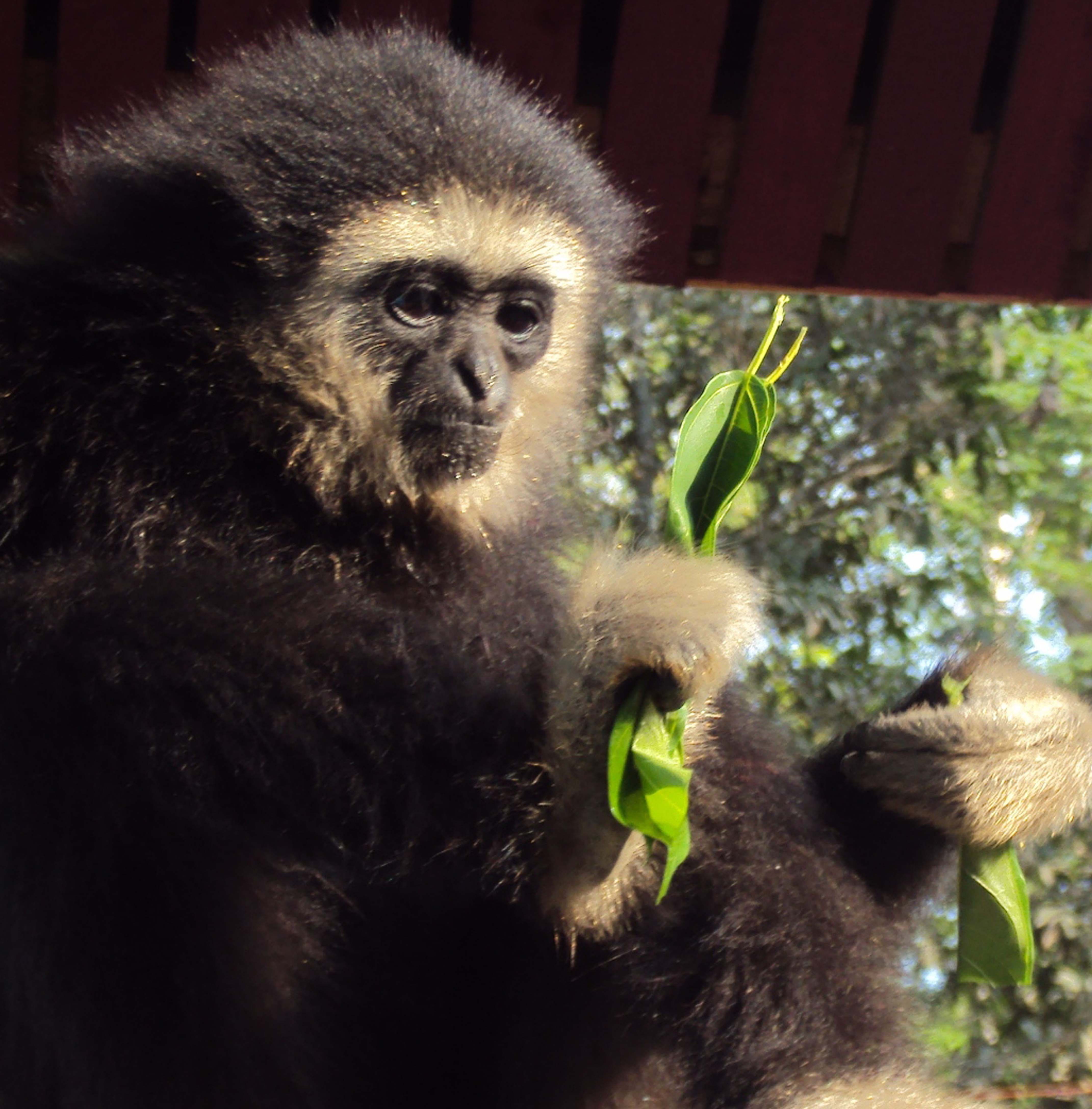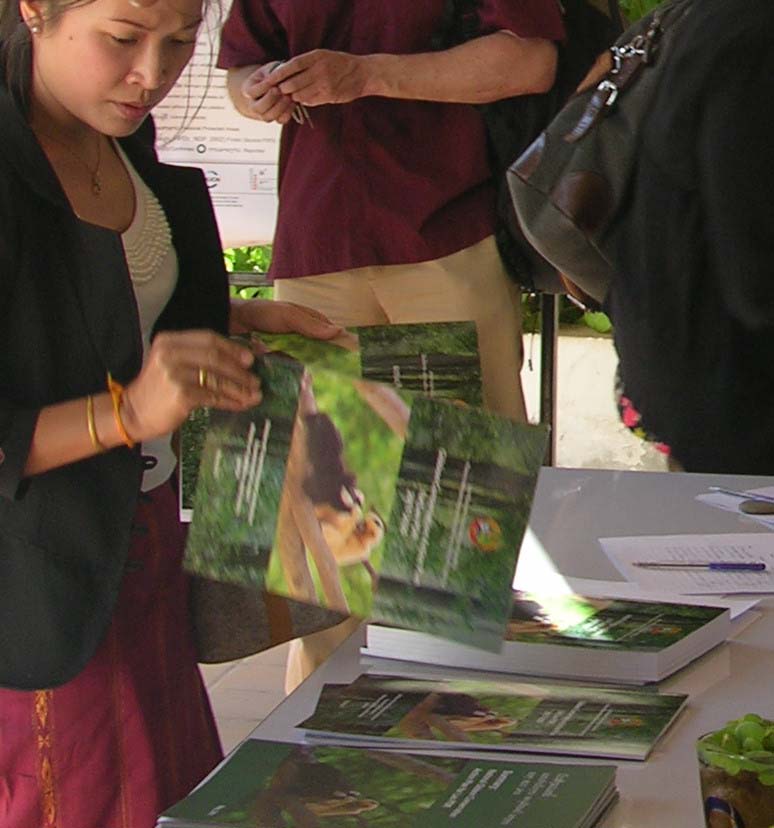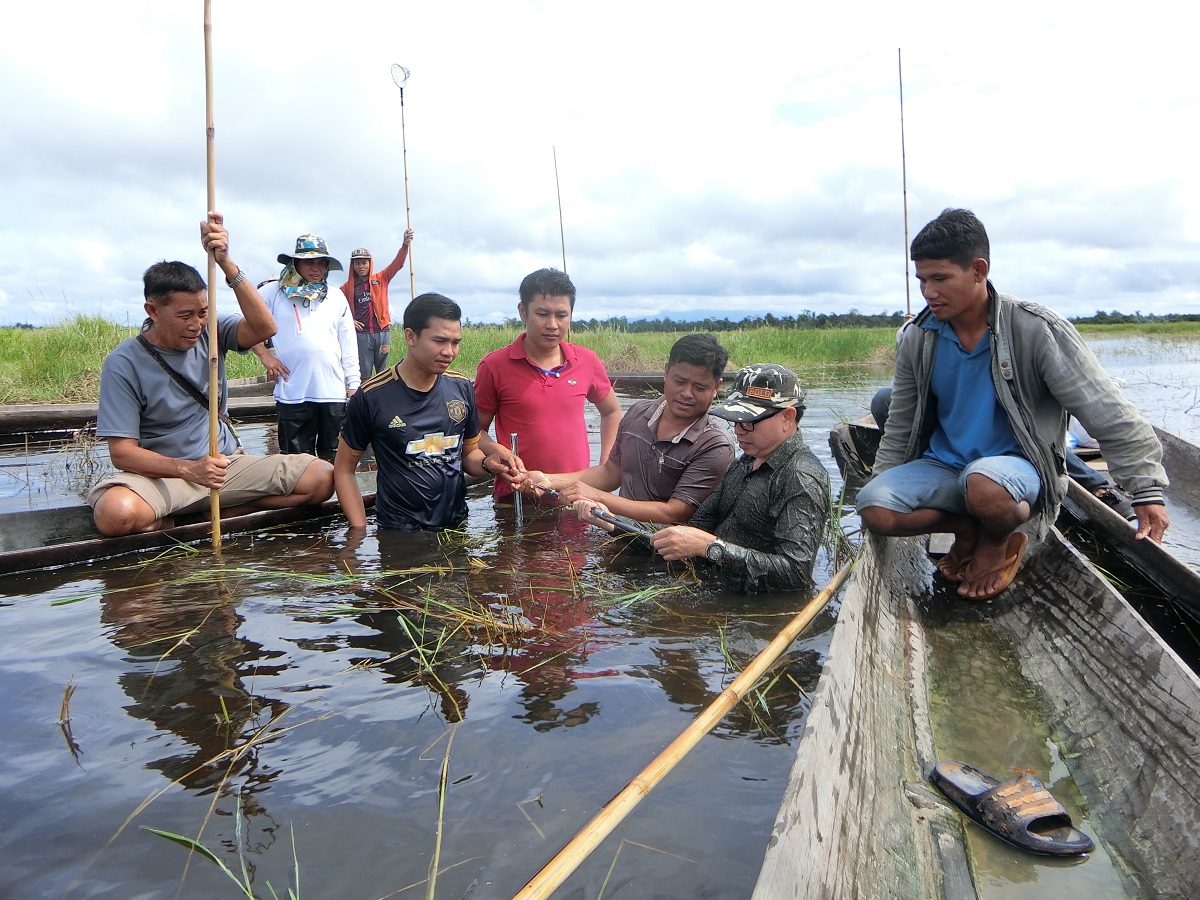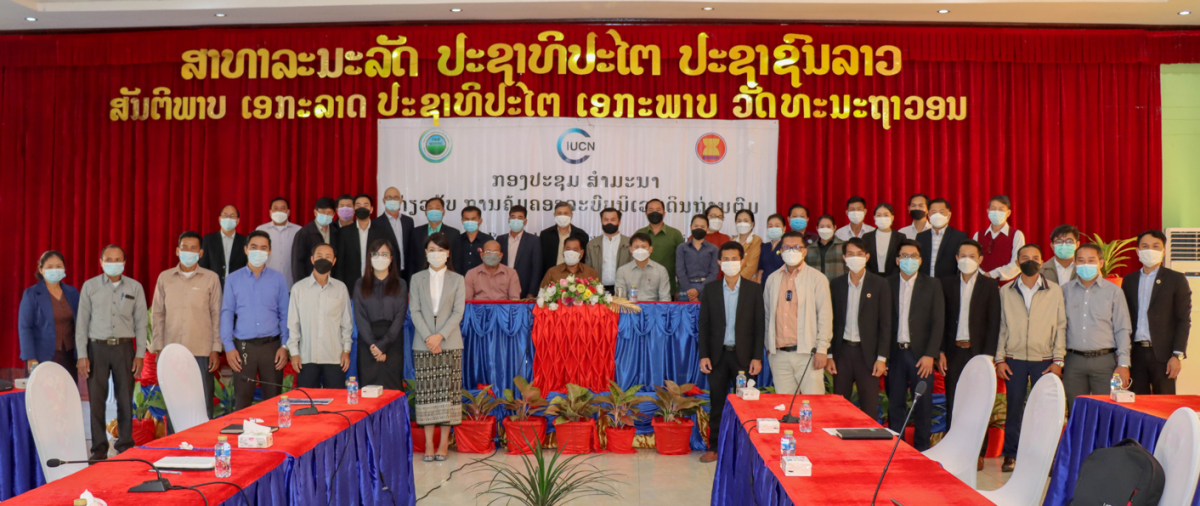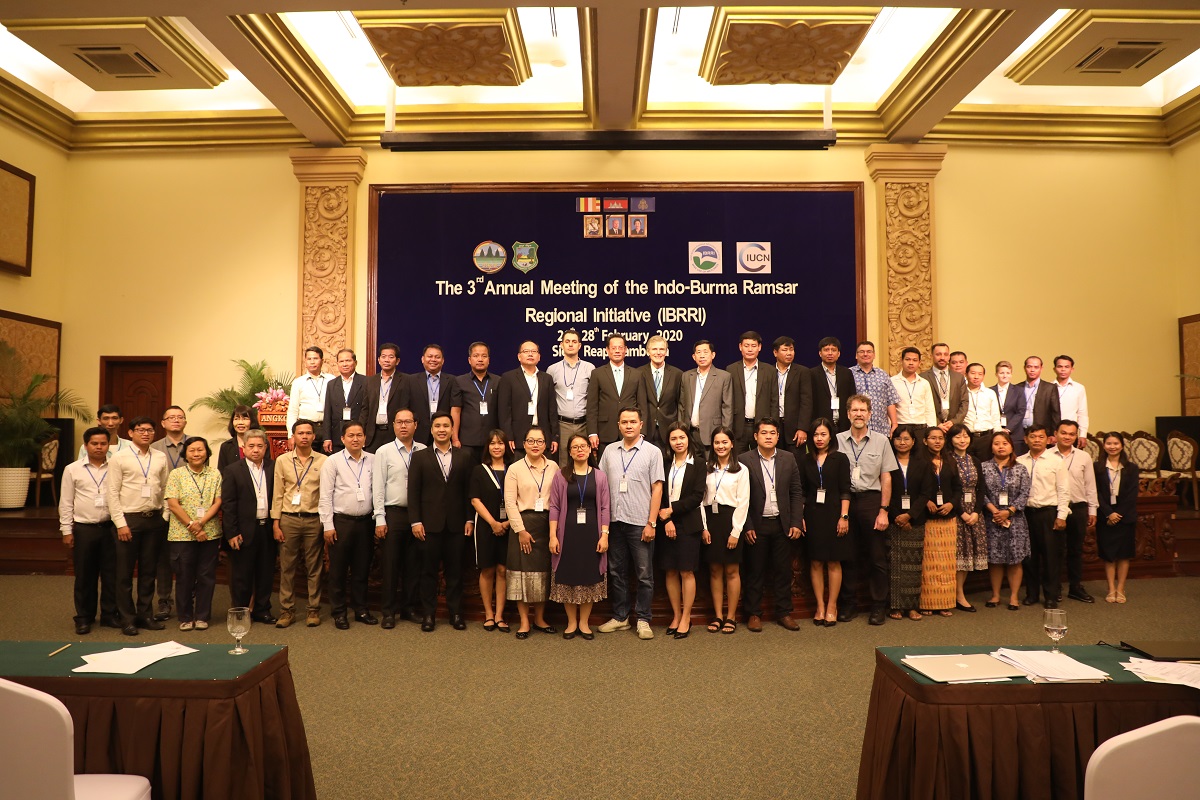National Action Plan for Conservation of Gibbons welcomed in Vientiane
The Government of Lao People’s Democratic Republic (PDR) has taken a further step to demonstrate its commitment to protecting globally important biodiversity by launching a national action plan for the conservation of gibbons.
Throughout their range gibbons are under considerable threat, often restricted to isolated patches of forest within a region with some of the highest human population densities in the world, namely South-East Asia. It is a poorly known fact that Lao PDR is one of the most species-rich countries in the world when it comes to gibbons.
Altogether six species of gibbon are known from Lao PDR, among 17 species globally, and the country offers the best chance for long-term survival for at least two of them. Of particular significance are the crested gibbons, of which there are four species in Lao PDR. This is the most endangered genus of gibbons and they are found almost exclusively east of the Mekong River, also in Cambodia, China and Vietnam.
Formally launched on 6 July 2011 in Vientiane, the National Gibbon Conservation Action Plan is a major step towards improving the status of gibbons in Lao PDR. Throughout the latter half of 2010 and early 2011, a technical working group of representatives of the Government of Lao PDR, the National University of Laos, scientists and non-governmental organisations outlined the steps to achieving a goal by 2020 of having gibbon populations in priority areas fully protected and the gibbon status for each species nationwide improving. The International Union for the Conservation of Nature (IUCN) and Fauna & Flora International (FFI) coordinated preparation of the action plan with the Division of Forest Resource Conservation within the Department of Forestry.
Achieving this goal is a considerable challenge within a climate of rapid economic development and natural resource depletion in Lao PDR. The priority for meeting that challenge is clearly stated within the action plan as seriously tackling the issue of hunting.
Even where there is forest degradation, Lao PDR remains blessed with vaster areas of intact forest than most of its immediate neighbours. Hunting therefore remains the main threat to gibbons. Yet hunting is often opportunistic as gibbons have relatively little economic value, but it is also deliberate as gibbons, being arboreal, do not accidentally get caught by traps on the ground.
A combination of improved enforcement and raised awareness are imperative to protecting gibbons in Lao PDR. Already though, there is a traditional appreciation of gibbons in Lao PDR among rural communities, for several reasons, including enjoyment of their entrancing calls or common beliefs that gibbons are manifestations of spirits in the forest.
To achieve the goal of the gibbon conservation action plan, priority locations have been identified for each gibbon species. At some of these locations, gibbons have been receiving attention already to ensure their long-term protection. It is hoped that approval of this action plan will lead to greater support for gibbon conservation at all priority sites throughout the country so improving the chances of survival of some of the world’s most endangered primates, while benefitting more of Lao PDR’s unique biodiversity.
As noted by the Deputy Director-General of the Department of Forestry, Mr Khamphanh Nanthavong, “Lao PDR has a good opportunity now for retaining its diversity of gibbon species while maintaining them as a resource for future development of the country.”
Given sufficient support and interest, the goal of the National Gibbon Conservation Action Plan for Lao PDR is achievable.
About Gibbons
Gibbons are apes, like chimps, gorillas and orangutans, and are thus closely related to humans. Native to the forests of Southeast Asia, they are considered to be among nature’s greatest acrobats. Gibbons live in close-knit family groups usually comprising a male, one female and their offspring. They also make distinct and complex bird-like calls, called a 'song', which they can project up to two kilometres through the forest canopy. Adult family members sing both duets and solos (with the male and female singing different parts) in the early morning to defend their territory. This haunting melody has become part of the folklore of the indigenous people of Southeast Asia.
Gibbon species in Lao PDR
There are six species of gibbons in Lao PDR:
1. Black crested gibbons (Nomascus concolor) are globally Critically Endangered and in Lao PDR there is only one location in the northwest of the country known to have a viable population. They are mainly found in China. One area in Vietnam is also known to have a viable population. See www.fauna-flora.org for more information on this species.
2. Northern white-cheeked crested gibbons (Nomascus leucogenys) are globally Critically Endangered. Most of the global population is found in Lao PDR. There are also records in China and Vietnam close to the Lao border.
3. Southern white-cheeked crested gibbons (Nomascus siki) are globally Endangered and only found in central Lao PDR and central Vietnam.
4. Northern buff-cheeked crested gibbons (Nomascus annamensis) are a newly-described species to science and found in southern Lao PDR, Vietnam and Cambodia.
5. White-handed gibbons (Hylobates lar) are listed as globally Endangered and are one of the most widely distributed gibbon species globally ranging from China down to Sumatra, but their situation in Lao PDR is perilous.
6. Pileated gibbons (Hylobates pileatus) is listed as globally Endangered and also found in Thailand and Cambodia, but this species is possibly on the verge of extinction in Lao PDR.
The categories Critically Endangered and Endangered are from the IUCN Red List of Threatened Species and define the most threatened categories for species still found in the wild.
About the International Union for the Conservation of Nature (IUCN) www.iucn.org
IUCN, International Union for Conservation of Nature, helps the world find pragmatic solutions to our most pressing environment and development challenges. IUCN works on biodiversity, climate change, energy, human livelihoods and greening the world economy by supporting scientific research, managing field projects all over the world, and bringing governments, NGOs, the UN and companies together to develop policy, laws and best practice. IUCN is the world’s oldest and largest global environmental organization, with more than 1,000 government and NGO members and almost 11,000 volunteer experts in some 160 countries. IUCN’s work is supported by over 1,000 staff in 60 offices and hundreds of partners in public, NGO and private sectors around the world.
About Fauna & Flora International (FFI) www.fauna-flora.org
FFI is the world’s first established international conservation body, founded in 1903. FFI acts to conserve threatened species and ecosystems worldwide, choosing solutions that are sustainable, are based on sound science and take account of human needs. FFI operates in more than 40 countries world-wide.
About the Division of Forest Resource Conservation
The Division of Forest Resources Conservation, part of the Department of Forestry within the Ministry of Agriculture and Forestry, is responsible for the management and protection of Lao PDR’s forest resources. This includes the wildlife residing within those forests, as well as the management of the country’s system of National Protected Areas.
Funding for this work:
Our work is only possible through generous donations. Funding support for preparing the National Gibbon Action Plan for Lao PDR came from the United States Embassy in Vientiane, the Arcus Foundation and the Mohammed bin Zayed Species Conservation Fund.
For more information, please contact:
Ms. Charlotte Hicks, IUCN Lao PDR. Tel: +856 21 216401; email: charlotte.hicks@iucn.org
